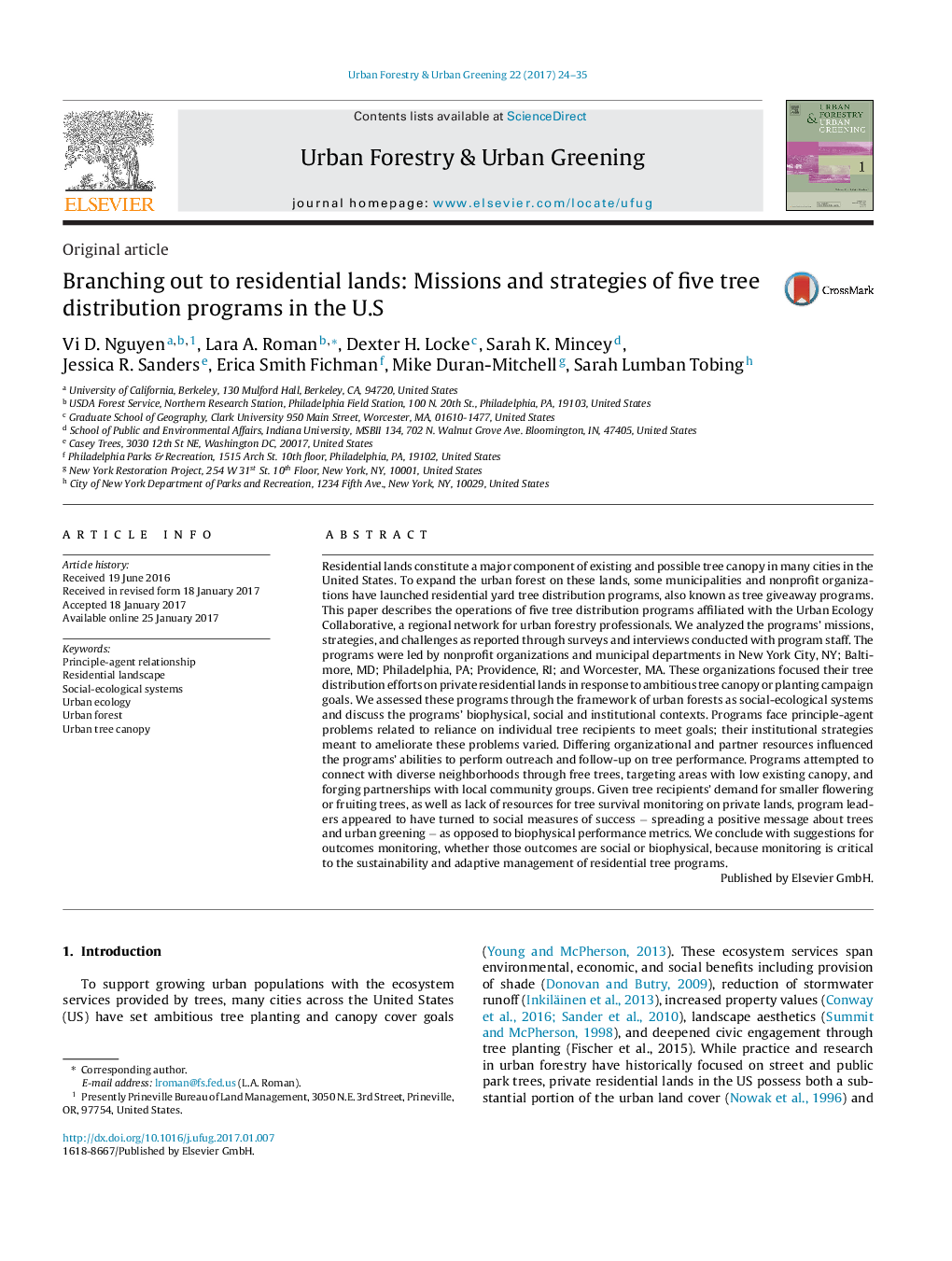| کد مقاله | کد نشریه | سال انتشار | مقاله انگلیسی | نسخه تمام متن |
|---|---|---|---|---|
| 6461999 | 1421868 | 2017 | 12 صفحه PDF | دانلود رایگان |
- Residential lands represent tremendous opportunity for increasing urban tree cover.
- Tree distribution or giveaway programs provide trees to private residential yards.
- We interviewed program leaders about their missions, strategies and challenges.
- Programs shifted species palettes to meet public interest in flowering and fruiting trees.
- We discuss factors that potentially impact program resilience.
Residential lands constitute a major component of existing and possible tree canopy in many cities in the United States. To expand the urban forest on these lands, some municipalities and nonprofit organizations have launched residential yard tree distribution programs, also known as tree giveaway programs. This paper describes the operations of five tree distribution programs affiliated with the Urban Ecology Collaborative, a regional network for urban forestry professionals. We analyzed the programs' missions, strategies, and challenges as reported through surveys and interviews conducted with program staff. The programs were led by nonprofit organizations and municipal departments in New York City, NY; Baltimore, MD; Philadelphia, PA; Providence, RI; and Worcester, MA. These organizations focused their tree distribution efforts on private residential lands in response to ambitious tree canopy or planting campaign goals. We assessed these programs through the framework of urban forests as social-ecological systems and discuss the programs' biophysical, social and institutional contexts. Programs face principle-agent problems related to reliance on individual tree recipients to meet goals; their institutional strategies meant to ameliorate these problems varied. Differing organizational and partner resources influenced the programs' abilities to perform outreach and follow-up on tree performance. Programs attempted to connect with diverse neighborhoods through free trees, targeting areas with low existing canopy, and forging partnerships with local community groups. Given tree recipients' demand for smaller flowering or fruiting trees, as well as lack of resources for tree survival monitoring on private lands, program leaders appeared to have turned to social measures of success â spreading a positive message about trees and urban greening â as opposed to biophysical performance metrics. We conclude with suggestions for outcomes monitoring, whether those outcomes are social or biophysical, because monitoring is critical to the sustainability and adaptive management of residential tree programs.
Journal: Urban Forestry & Urban Greening - Volume 22, March 2017, Pages 24-35
